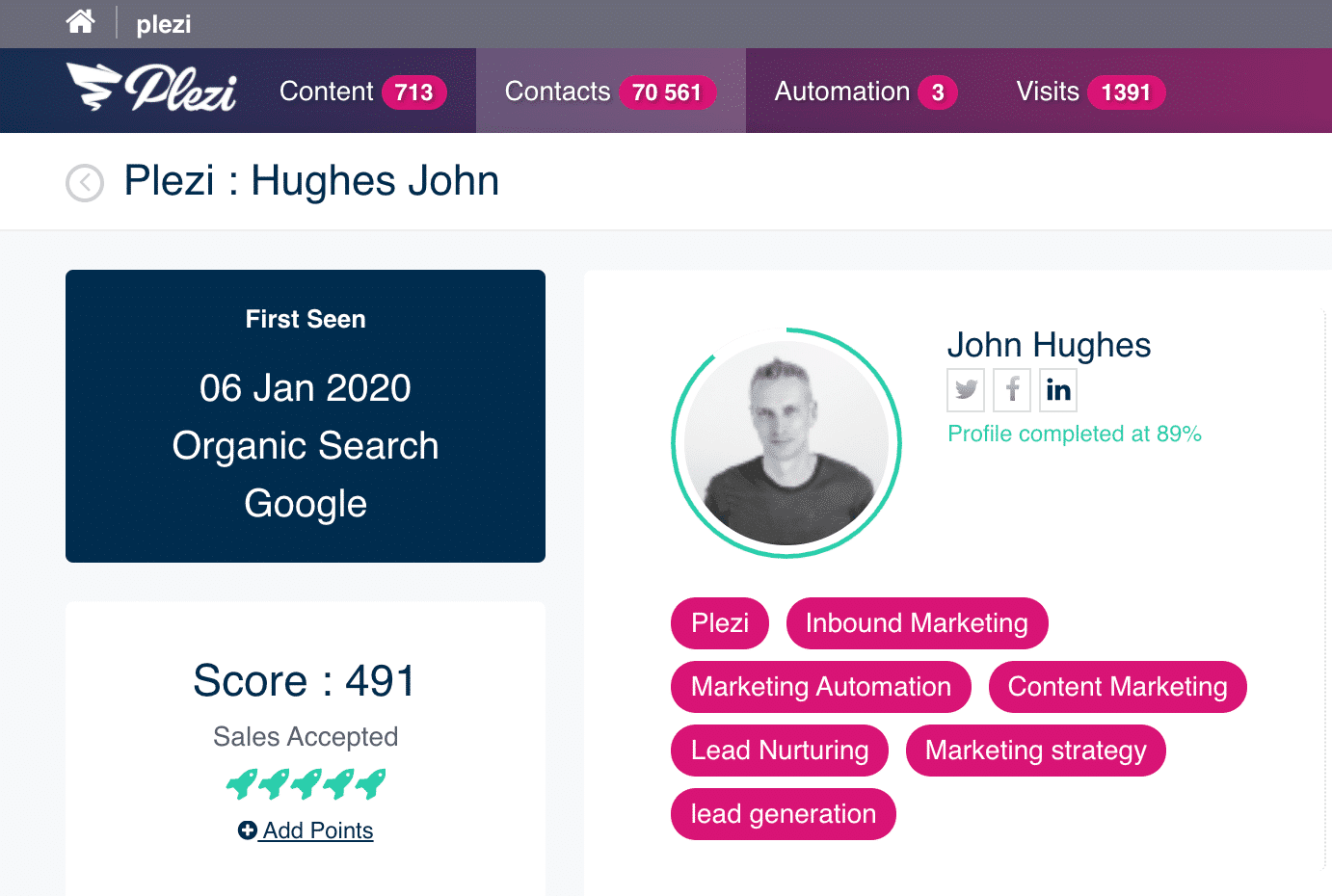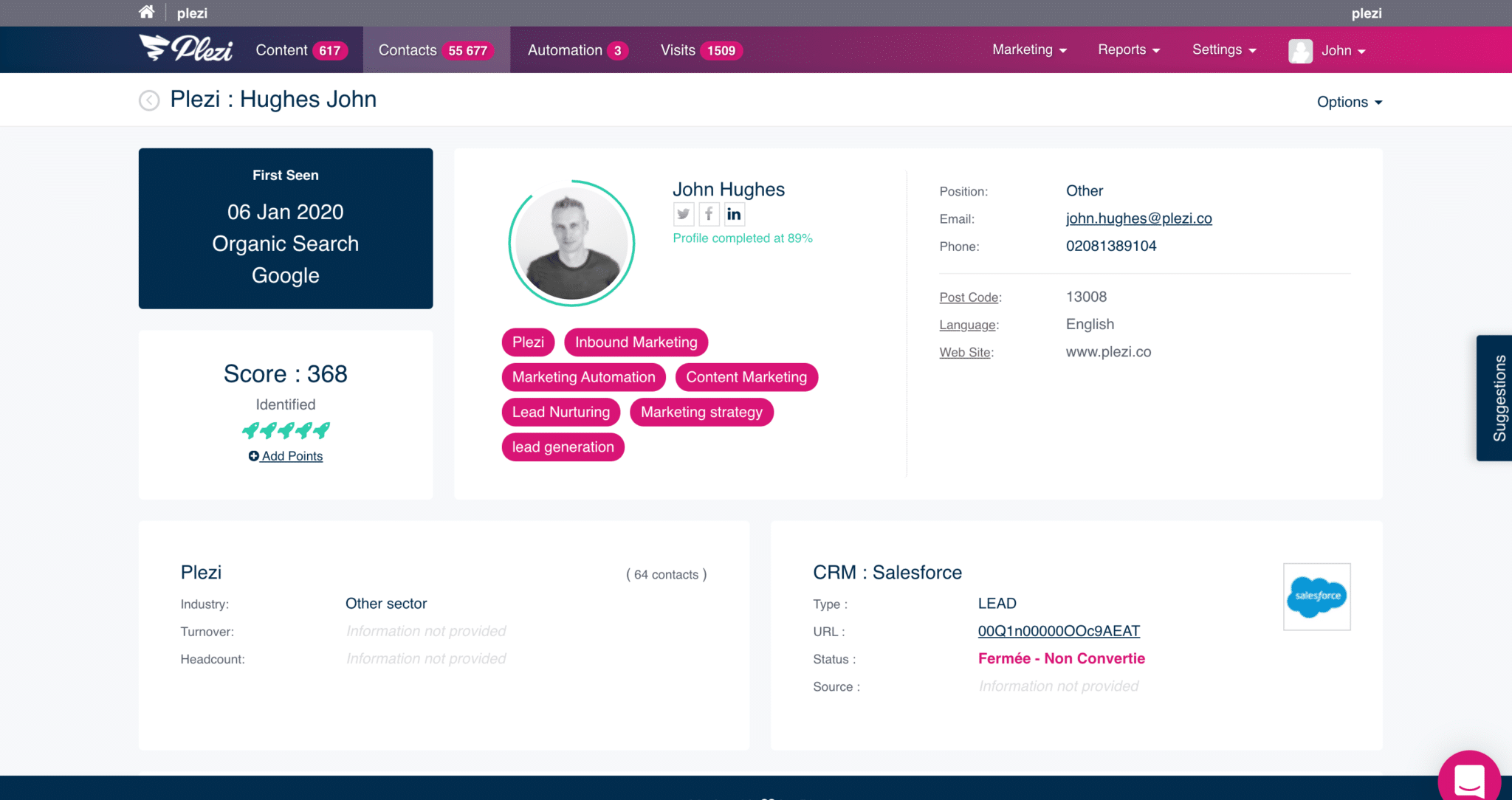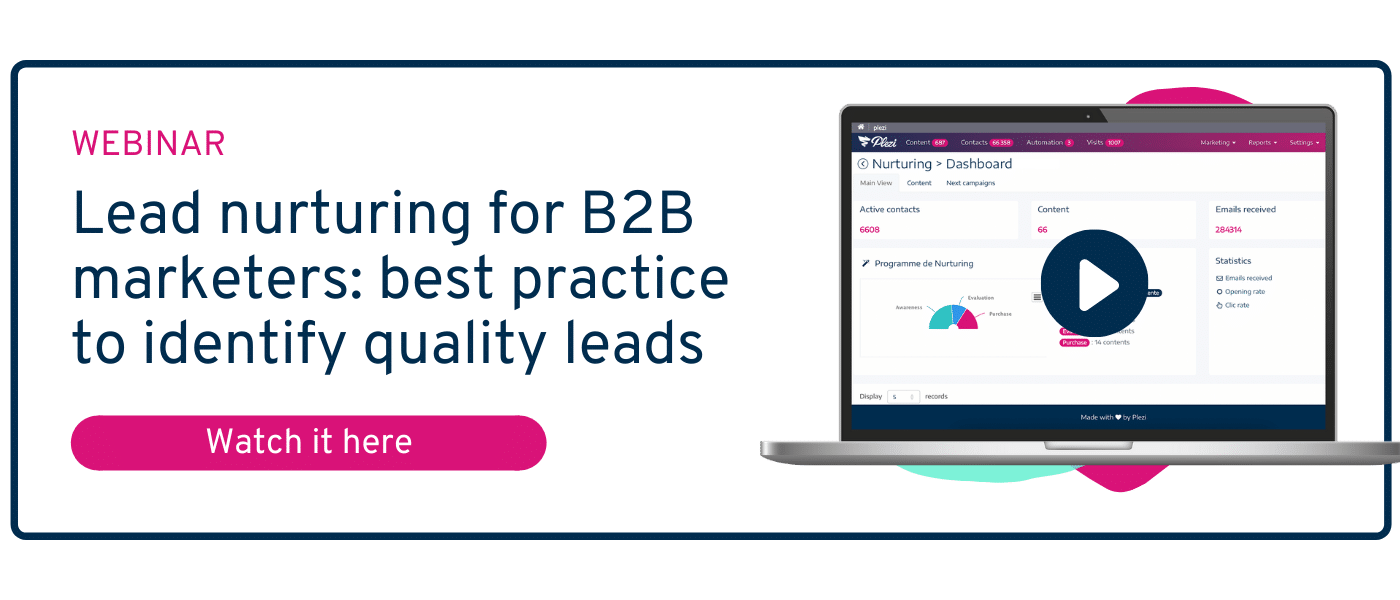You’ve generated leads. And now you have a database of contacts. But while having a database of contacts is good, having a database of contacts that are potentially of value to your business is even better.
Being able to effectively qualify those contacts is vital to your inbound marketing strategy. You’ve probably already implemented a content strategy to generate leads and move them forward in the buying cycle.
But you might have also already encountered a problem. Your contacts aren’t segmented, which means you might not be sending them the right content. Consequently, your marketing campaigns are bound to produce mixed results and your leads are likely to get stuck in the marketing funnel. If that sounds all too familiar, your inbound marketing strategy isn’t producing the results you expected.
It’s something of a catch 22. You can’t send leads the right content because you don’t have enough information about them, and you can’t get that information because you don’t send them the right content.
That means you need to change how you qualify your contacts.
So how can you segment your contacts effectively? In this post, we’ll introduce you to Plezi’s tags, which let you automatically qualify leads based on the content they view on your website.
In this post, we’ll look at:
- The limitations of traditional methods for qualifying leads
- How to segment leads by interest
- How tags can benefit marketers
- 4. How to use tags in Plezi
1. The limitations of traditional methods for qualifying leads
If you want your inbound marketing strategy to be effective, you need more than just a database of contacts and website content. If you’re a regular reader of our blog, you’ll know that a good inbound marketing strategy requires you to send the right content to the right person at the right time.
And in order to do that, you have to start qualifying them at an early stage.
1.1 Who is responsible for qualifying leads?
When we talk qualifying leads, the first thing many people think of is a process handled by sales, and which almost always involves the four criteria commonly known as BANT – Budget, Authority, Need, Timeline.
But in recent years, the marketing department has also become responsible for initially qualifying leads before sending them to salespeople.
1.2 Lead Scoring
If you think that the qualification of leads by the marketing department goes hand in hand with lead scoring, you’re right.
Lead scoring involves allocating a certain score to leads based on their position in the purchase funnel. A lead is considered ready to buy if they are at the final stage of the funnel.
But while lead scoring is important, it also has some limitations for marketers when it comes to determining how valuable a lead is.
A truly effective inbound marketing strategy can’t simply be based on whether a lead is ready to buy or not. Because the topics they are interested in, the problems they face, and their buyer’s journey are all unique to them.
That means it’s probably not a good idea to send a lead who is in the “awareness” stage all the content you have for this stage because not all of it will be of interest to them. And by doing so, you’re still a long way from having a personalized approach to qualifying leads.
In today’s environment, effective inbound marketing strategies take a more qualitative approach to qualifying leads.
2. The Smart way to qualify leads: by interest
2.1 How to segment leads by interest
When you create content for your website, you probably already asking yourself an important question, what interest will a lead have in my content or a specific page of my website?
The answer to this question, whether this involves a product, an activity, or an added benefit (e.g., saving of time or money), represents something a lead is interested in. So, you’re already thinking about the interests of your different buyer personas. Now you need to make that explicit in the approach you use to qualify them.
If you want to know why you should use buyer personas, how to create them, and above all how to make use of them in an inbound marketing strategy, we tell you everything you need to know in our guide + complete kit to creating buyer personas.
So now you have a database of contacts whose interests you know something about. These interests can also be expressed in terms of the different pain points that leads have. Segmenting your leads by these areas of interest will then enable you to better qualify them.
By doing so, you’ll be able to nurture leads (i.e., send them content to improve their understanding of certain topics) and move them forward in the buying cycle until they are ready to be contacted by your sales team.
2.2 Plezi’s Tags
At Plezi, we use tags to let us know what topics our leads are interested in. They give us a much better overview of the interests of a given target audience and let us know how many people are interested in each topic.
For example, if your product is a Human Resources Information System (HRIS) and you’ve decided to use a content marketing strategy, it’s a good idea to create tags for “payroll“, “HR“, or even “integration“. By assigning these tags to the relevant pieces of content (e.g., blog posts, white papers, webinars), you’ll then be able to segment leads by interest based on what content they view or download.
This information enables marketers to create the right content strategy for their target audience. And better targeting their marketing campaigns enables them to collect more information about leads and continually optimize this process. This is how they can create a much sought-after virtuous circle for content.
This is also why we created the Smart Campaign, which first and foremost lets us send the right content to the right lead based on both how ready they are to buy and their interests.
Plezi customer success manager, Nabila, supports customers who use both our tags and the Smart Campaign every day. She says that the biggest advantage of Plezi’s tags is that they let companies personalize the content they send to leads:
Segmenting a contact list by things like industry or role isn’t enough. Segmenting them by interest lets us help leads improve their understanding of a particular topic and provide them with valuable content. This helps us to better target our marketing campaigns, which then generate much better results.
3.3 How tags can benefit marketers
Plezi’s tags have three main benefits:
- they help you to segment contacts more effectively;
- they help facilitate your lead nurturing programme and collect valuable information;
- they improve the effectiveness of your sales team.
3.1 Segment your contacts more effectively
A CRM usually contains the latest information about leads, like their role, industry sector, and whether they are already customers or not.
But by using Plezi’s tags, you can segment them even further – by interest.
The more detailed information that this provides will enable you to confidently create relevant contact lists and send emails to leads inviting them to watch webinars or download premium content, like a new white paper, for example.
Tags guarantee that your email marketing campaigns will produce better results, especially in terms of open and click rates. In a nutshell, segmenting contacts by interest lets you better target your marketing campaigns and improve your results.
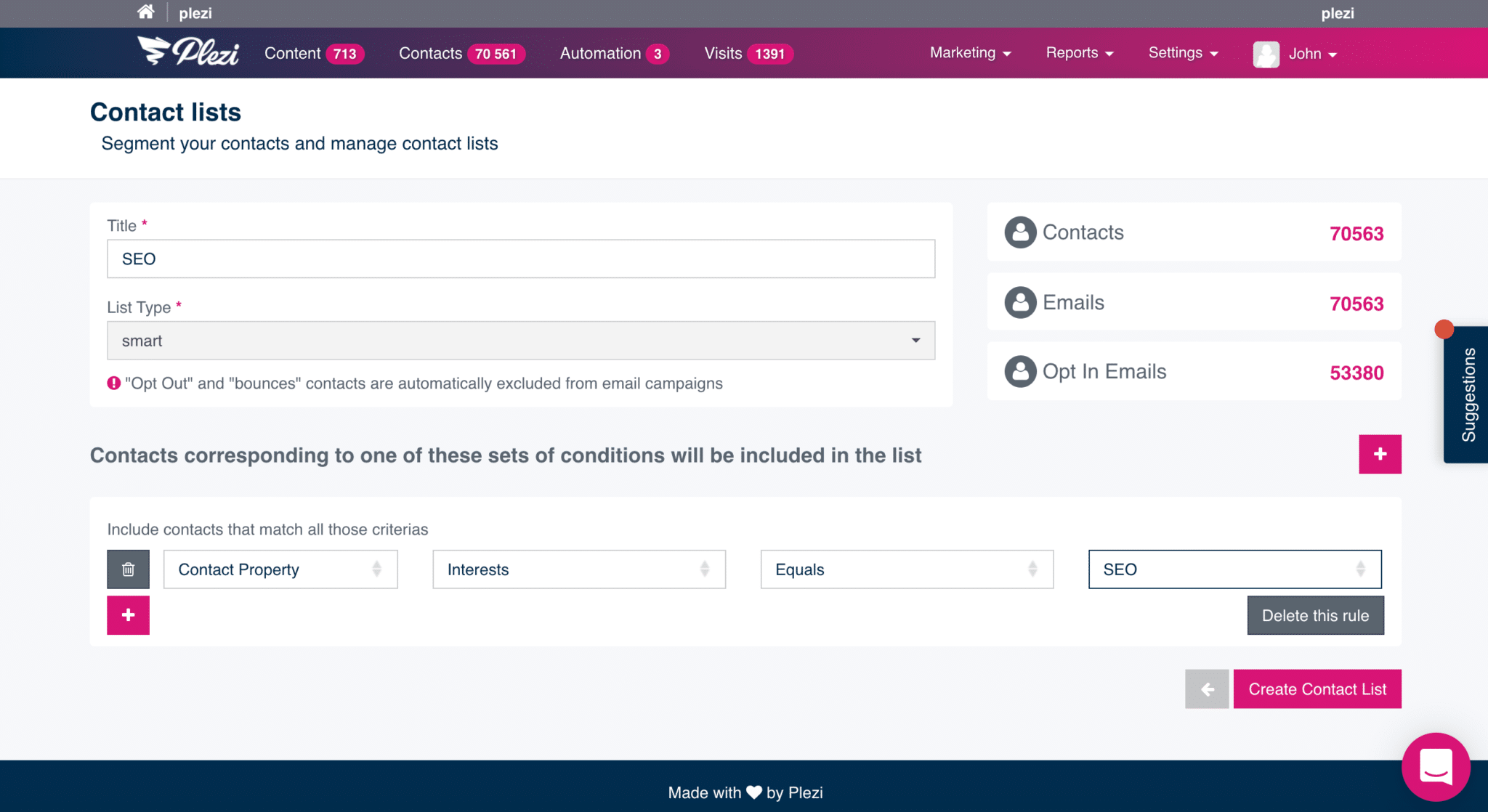
3.2 Help facilitate the Smart Campaign and collect valuable information
The key component of our inbound marketing strategy at Plezi, the Smart Campaign lets you immediately see what topics you lack content for, those that work well, and those that work less well. As a result, it enables you to continually fine-tune and optimize your content strategy.
Nabila explains how tags are vital to the success of the Smart Campaign:
Plezi’s tags provide a unifying thread to the conversation that we have with leads in order to convince them to become customers. They determine what content the Smart Campaign sends leads and enable us to continue the conversation throughout the lead nurturing process. Being able to collect information from them in the process also saves us valuable time. Because the problems and challenges that leads face are different at each stage of the buying cycle. By adding interests to how ready leads are to buy, we can help move leads who might be stuck in the funnel towards purchase and answer their queries, something which would normally be done by salespeople.
3.3. Improve the effectiveness of your sales team
Last, but not least, tags also make it easier to share information with the sales department.
It goes without saying that the information collected using tags is of huge value to salespeople. It makes it easier for them to personalize their approach to leads and to gather even more information about them. This then lets them adapt their sales pitch as a result.
The real icing on the cake is that it also saves time for leads, who will appreciate your personalized approach. That’s because it lets you send them the information and content they need before they even search for it.
4. How to use tags in Plezi
Now that know more about Plezi’s tags and the benefits of using them, let’s look at how to start creating them in Plezi, assigning them to content, and attributing them to leads.
4.1 Creating tags and assigning them to content
- You create the tag you want in Plezi
- When you create content, you then assign one or more tags to it. For example, our webinar on “Lead Nurturing for B2B Marketers”. In Plezi we assigned the tag “Lead Nurturing” to qualify the interests of prospects who download it.
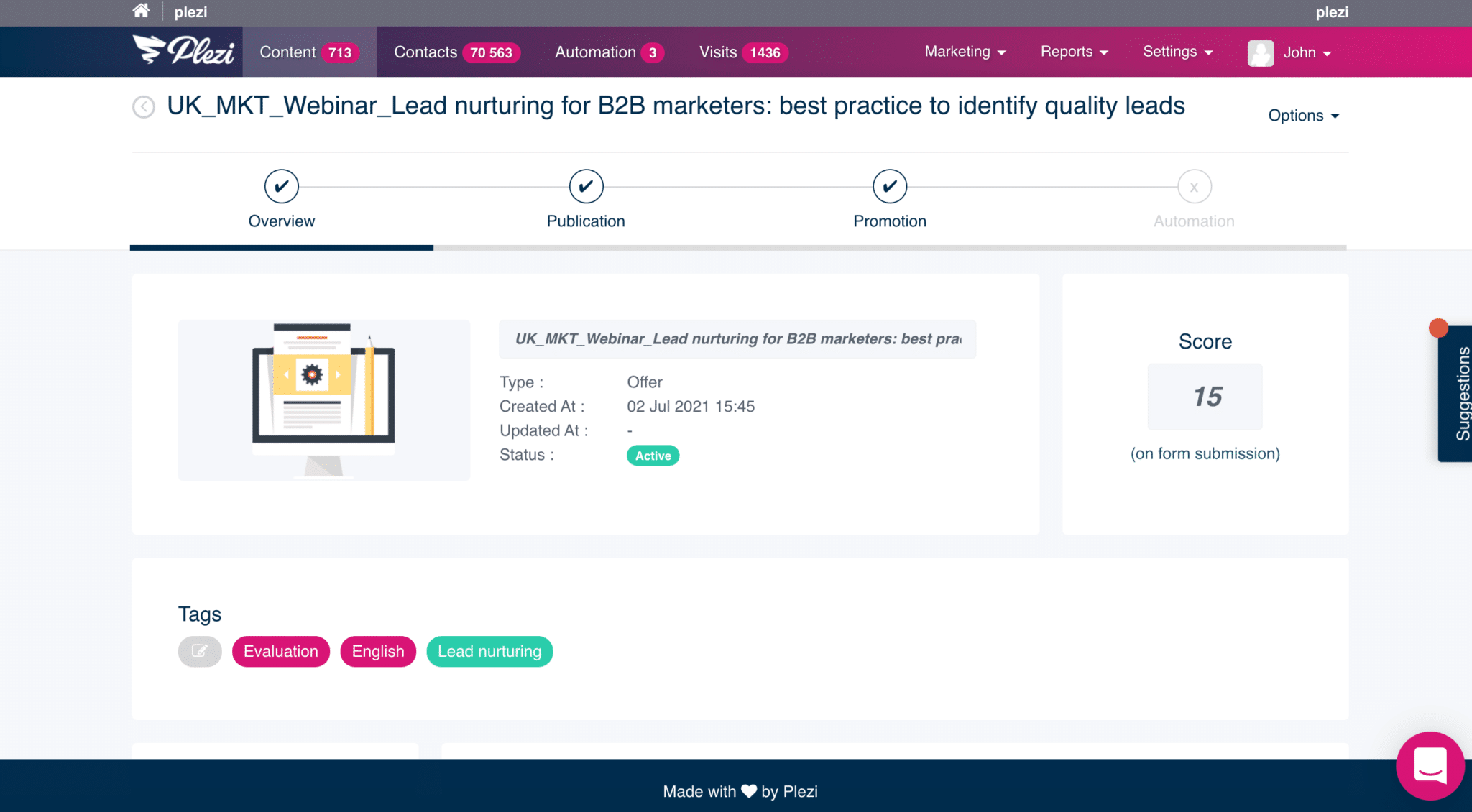
4.2 How to attribute tags to contacts
Tags are gradually attributed to leads for different areas of interest as they interact with content on your website.
This can happen in two ways:
- By submitting an online form to download premium content or request a product demonstration, for example. The tag assigned to this content is then attributed to the lead. To use the example above, a lead who downloads the webinar replay that has the “Lead Nurturing” tag would have this tag attributed to their profile in Plezi.
- By viewing blog posts on our website. The number of posts that a lead must view in order to have the corresponding tags attributed to their profile is set ahead of time. This typically takes longer to happen for a good reason. When a lead submits an online form, they provide us with valuable information and show definite interest in a specific topic. Simply viewing a blog post, on the other hand, doesn’t necessarily demonstrate any great level of interest in a topic. A lead might simply be looking for information and leave your website once they’ve found it, possibly never to return.
Obviously, the goal is to figure out all the different topics that a lead is interested in. Plezi lets you easily see all the tags that are attributed to a lead in their lead profile (below in pink).
Qualifying leads involves determining whether someone who is interested in your product or service is likely to become a customer. If they are, it requires you to spend some time and effort to ensure this happens.
It won’t come as much of a surprise to know that you’ll see a better return on investment and a higher conversion rate from leads who are correctly qualified. But effectively qualifying leads is also vital to the success of your inbound marketing strategy.
To find out more about Plezi’s tags, our Smart Campaign, and our marketing automation software, ask for a product demonstration today.






